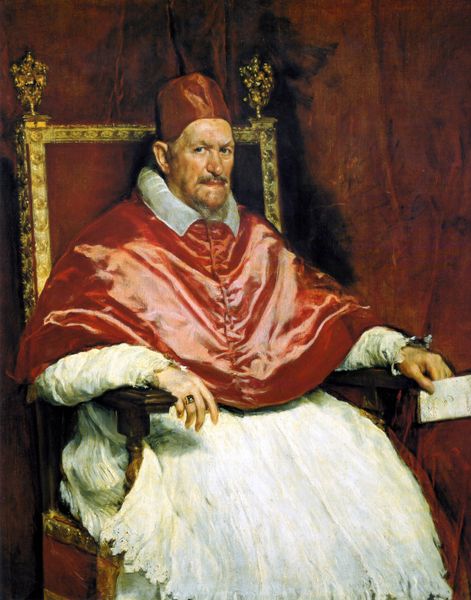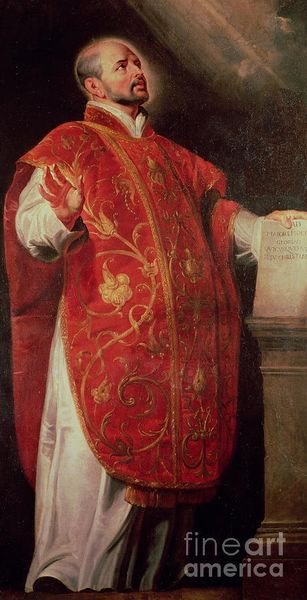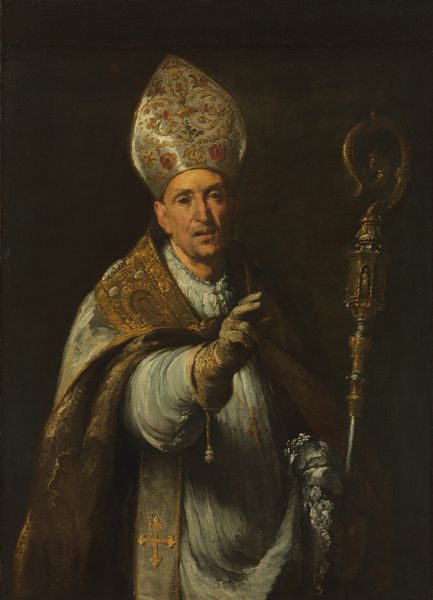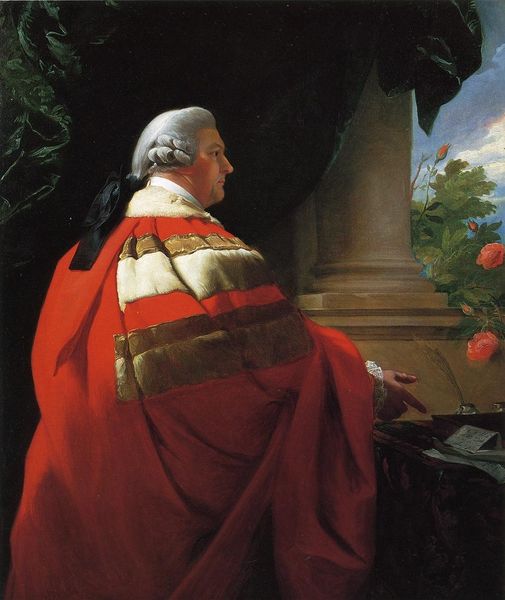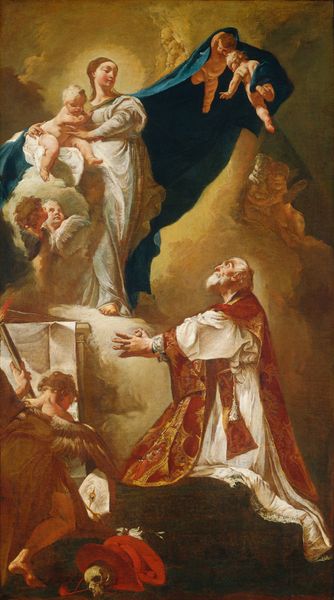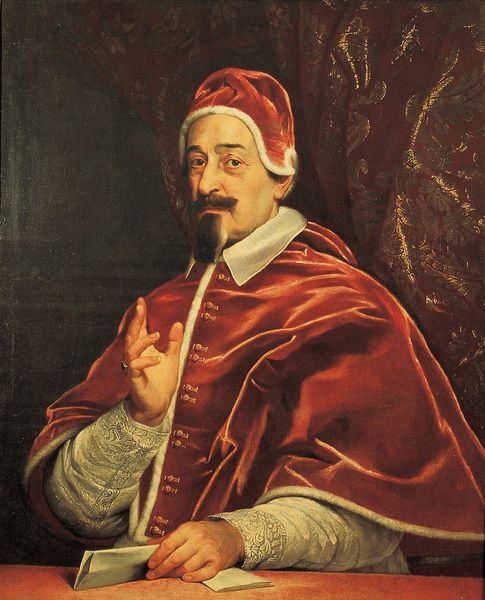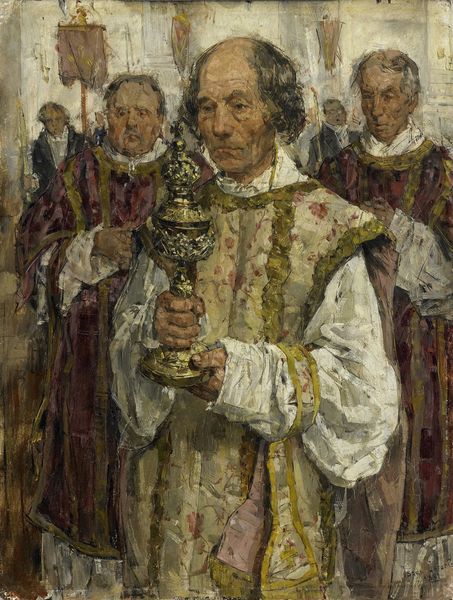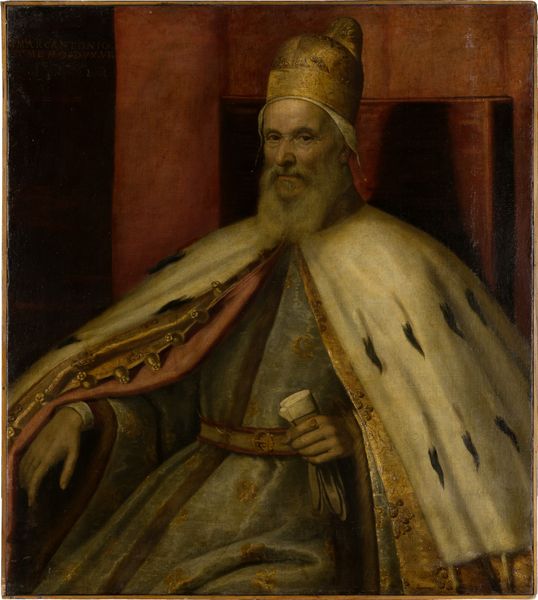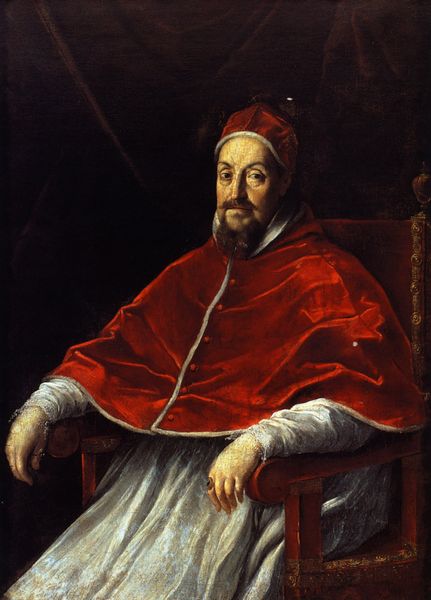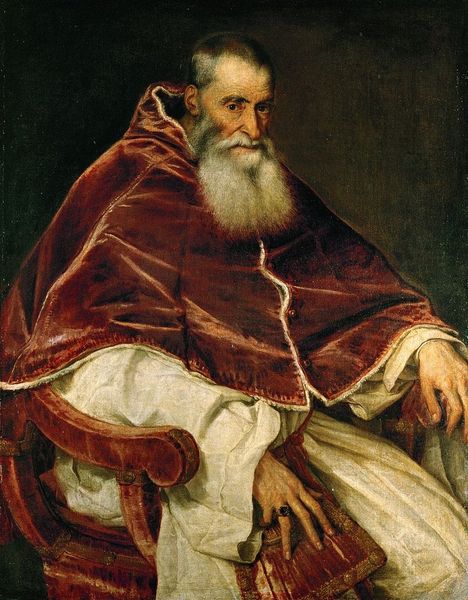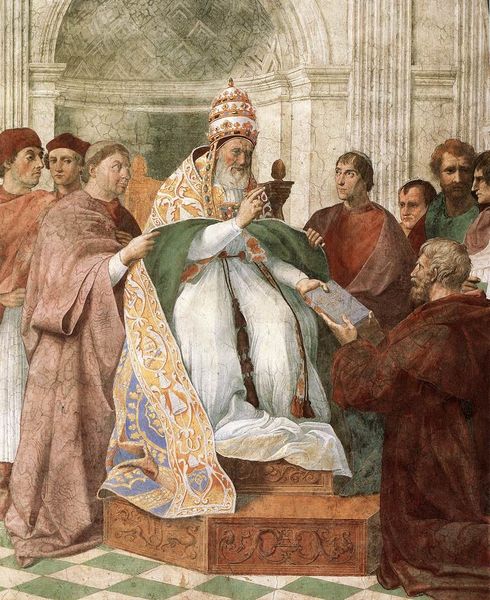
painting, oil-paint
#
portrait
#
neoclacissism
#
portrait
#
painting
#
oil-paint
#
history-painting
#
academic-art
Copyright: Public Domain: Artvee
Curator: Well, the figures certainly dominate the space, don't they? There’s a clear hierarchy immediately established by their positioning and gaze. Editor: Indeed. We’re looking at Jacques Louis David's "Portrait of Pope Pius VII and Cardinal Caprara," completed in 1805. It’s an oil painting steeped in Neoclassical ideals, depicting two powerful figures within the Catholic Church. Curator: Neoclassical indeed; those clean lines, the almost sculpted feel to their faces... It's undeniably imposing. I'm particularly struck by the contrast between Pius VII’s direct, almost confrontational gaze and Caprara, looming over him, eyes averted in thoughtfulness or perhaps even something more calculating? It makes you wonder about the dynamics at play. Editor: Absolutely. Understanding the sociopolitical context is key here. This painting emerges from a period of significant upheaval between France and the papacy under Napoleon. David, being Napoleon’s primary court painter, was inherently involved in this dynamic. Notice the restraint of papal display. This portrait was completed just after the Concordat of 1801, where Pope Pius VII made many concessions to Napoleon, for example. Curator: And that negotiation shaped so much about religious authority! It almost feels like that tension, that power play, is visible in how David has chosen to stage this portrait. Even their robes—the heavy opulence, particularly of Caprara's attire versus the Pope's…are these symbolic of subtle forms of power beyond the spiritual? Editor: Undeniably so. Everything within the composition – from the precise rendering of fabric textures to the stoic facial expressions – conveys an image that attempts to legitimize the pontiff even as he’s weakened through Napoleon's ascent. I am intrigued about how this piece exists beyond pure historical record, particularly related to its themes of leadership and its subtle complexities of representation. It goes far beyond just surface appearance. Curator: Yes, by situating it within that context, we start to realize how even seemingly straightforward depictions can be potent negotiations of authority and ideology. So much of this portrait seems like a complex reflection of that power imbalance and reconciliation between church and state. It shows how visual arts often serve in negotiations during these key moments in history. Editor: This really illuminates the intricate game of power in early 19th century European politics, offering such a unique window. Curator: Absolutely. A poignant reminder of art’s ability to both document and participate in history.
Comments
No comments
Be the first to comment and join the conversation on the ultimate creative platform.

